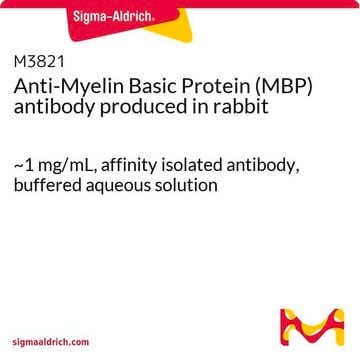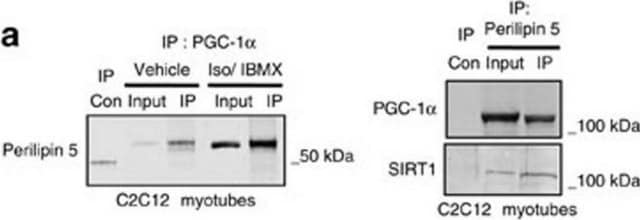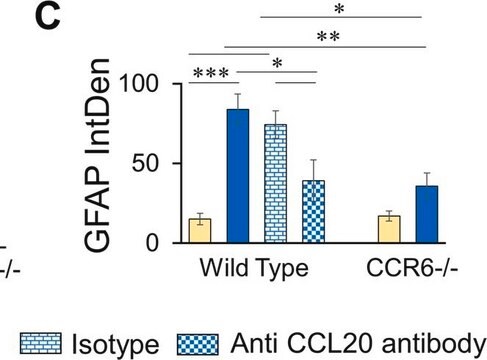AB5682
Anti-Neurogenin-2 Antibody
Chemicon®, from rabbit
Synonym(s):
MATH4a (ms), ATH 4a, Atoh4, Ngn2, Atonal Protein Homolog 4
About This Item
Recommended Products
biological source
rabbit
Quality Level
antibody form
affinity purified immunoglobulin
antibody product type
primary antibodies
clone
polyclonal
purified by
affinity chromatography
species reactivity
rat, mouse, human
manufacturer/tradename
Chemicon®
technique(s)
ELISA: suitable
immunocytochemistry: suitable
immunohistochemistry (formalin-fixed, paraffin-embedded sections): suitable
western blot: suitable
isotype
IgG
NCBI accession no.
UniProt accession no.
shipped in
dry ice
target post-translational modification
unmodified
Gene Information
human ... NEUROG2(63973)
General description
Specificity
Immunogen
Application
Neuroscience
Developmental Neuroscience
Neuronal & Glial Markers
Immunocytochemistry: Cat. # AB5682 detected Neurogenin-2 in PC12 cells at 1:500 dilution. It was also detected in paraformaldehyde-fixed differentiated human neural stem cells.
ELISA: 0.5-1 μg/mL using 1 mg/mL control peptide (Catalog Number AG352) per well.
Immunohistochemistry on paraffin sections has been reported by Lamolet, B. et al. (2004)
Optimal working dilutions must be determined by the end user.
Target description
Linkage
Physical form
Storage and Stability
Analysis Note
Human brain Lysate.
Legal Information
Disclaimer
Not finding the right product?
Try our Product Selector Tool.
Storage Class Code
12 - Non Combustible Liquids
WGK
WGK 2
Flash Point(F)
Not applicable
Flash Point(C)
Not applicable
Certificates of Analysis (COA)
Search for Certificates of Analysis (COA) by entering the products Lot/Batch Number. Lot and Batch Numbers can be found on a product’s label following the words ‘Lot’ or ‘Batch’.
Already Own This Product?
Find documentation for the products that you have recently purchased in the Document Library.
Our team of scientists has experience in all areas of research including Life Science, Material Science, Chemical Synthesis, Chromatography, Analytical and many others.
Contact Technical Service








